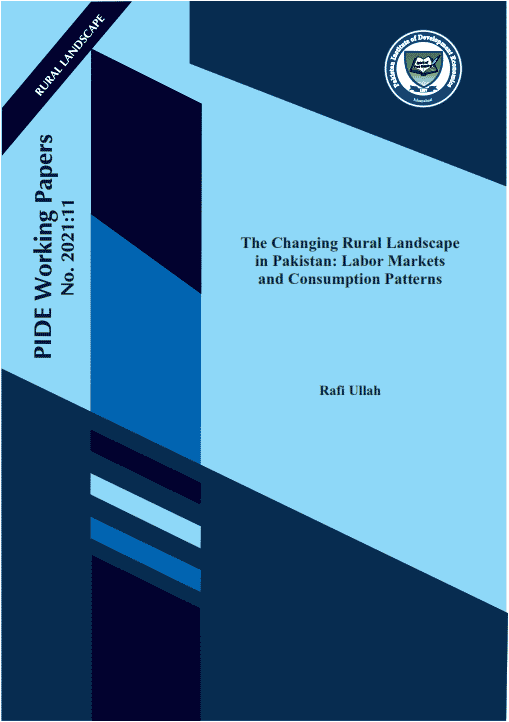
Pakistan Institute of Development Economics
- Home
Our Portals
MenuMenuMenuMenuMenuMenuMenu - ResearchMenuMenuMenuMenuMenuMenuMenu
- Discourse
- The PDR
- Our Researchers
- Academics
- Degree Verification
- Thesis Portal
- Our Portals
The Changing Rural Landscape in Pakistan: Labor Markets and Consumption Patterns
Abstract
Pakistan’s rural areas have complex economies with employment permeating across a range of industry divisions apart from agriculture. This paper aims to examine the trends in rural employment and consumption patterns by looking at key individual and household level indicators. The data used for this exercise comes from Household Integrated Economic Surveys (HIES) conducted by the Pakistan Bureau of Statistics (PBS) over multiple years.
A thorough examination of the trends indicates that there has been a persistent shift in non-farm-related employment in Pakistan, with about half the working population now involved in non-farm-based jobs. Furthermore, approximately two-third of household income comes from sources that are not directly linked to agricultural production, either crop production or livestock. People in rural Pakistan are switching from non-farm employment due to a myriad of reasons, including an increase in peri-urban agglomerations, increasing connectivity, low returns to agriculture, and scarcity of land due to skewed land ownership.
Household consumption patterns over the past two decades also indicate key shifts in the nature of commodities consumed. Households on average spend less than half their total consumption expenditure on food items. This is even true for families in the lowest income quintile.
There is a need to examine further the changing economic landscape of rural areas in Pakistan. The research needs to move away from ideological pitfalls that have often inhibited factual realities by relegating rural areas as nondynamic places that only contain primary sector economic activities.



